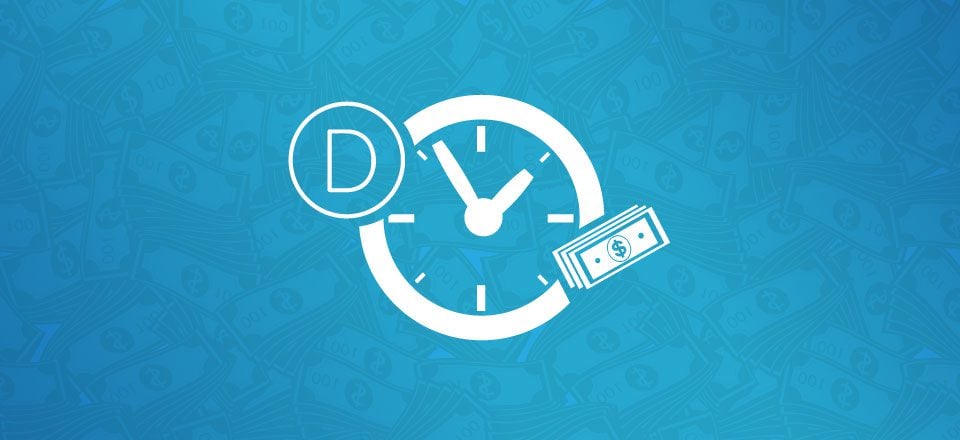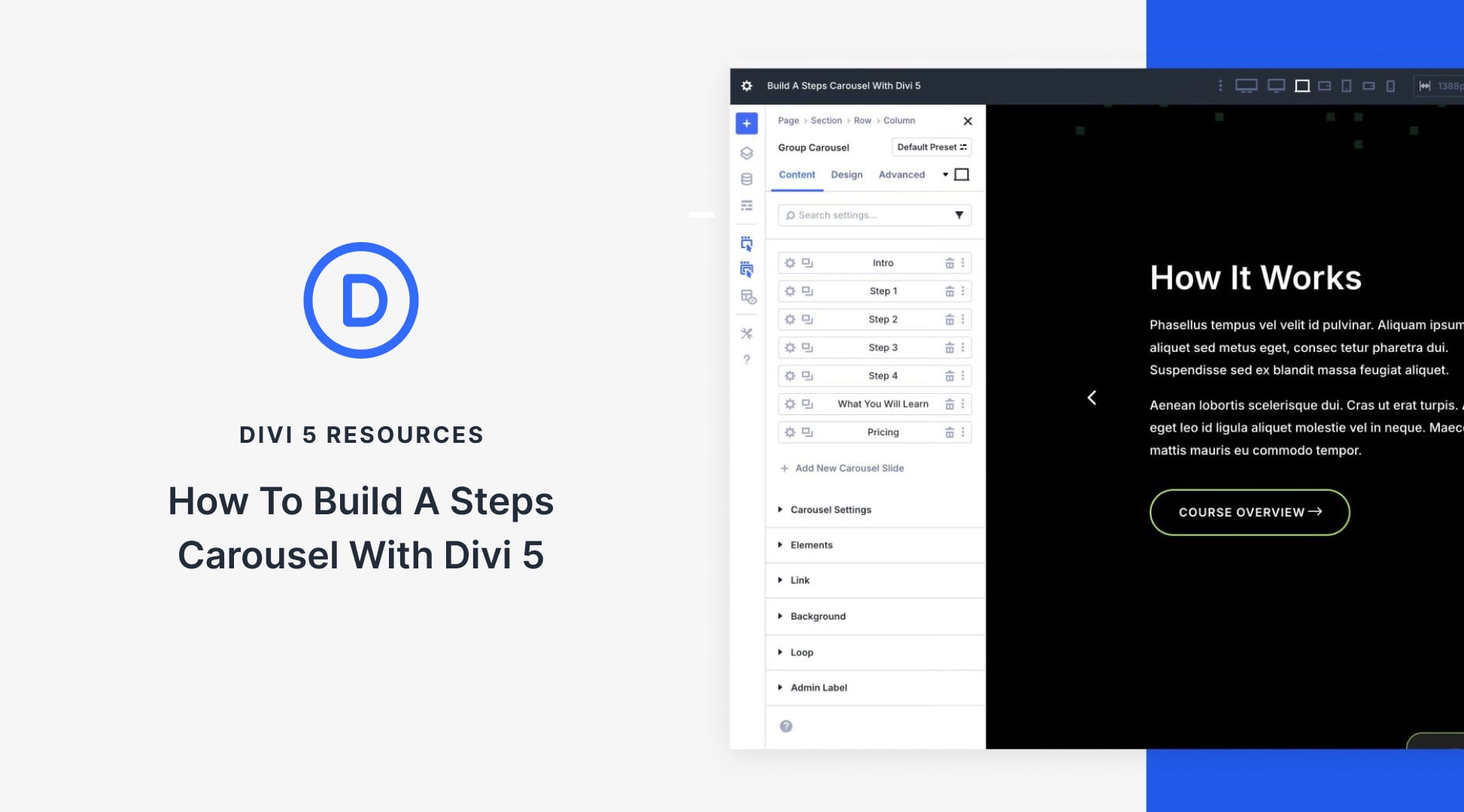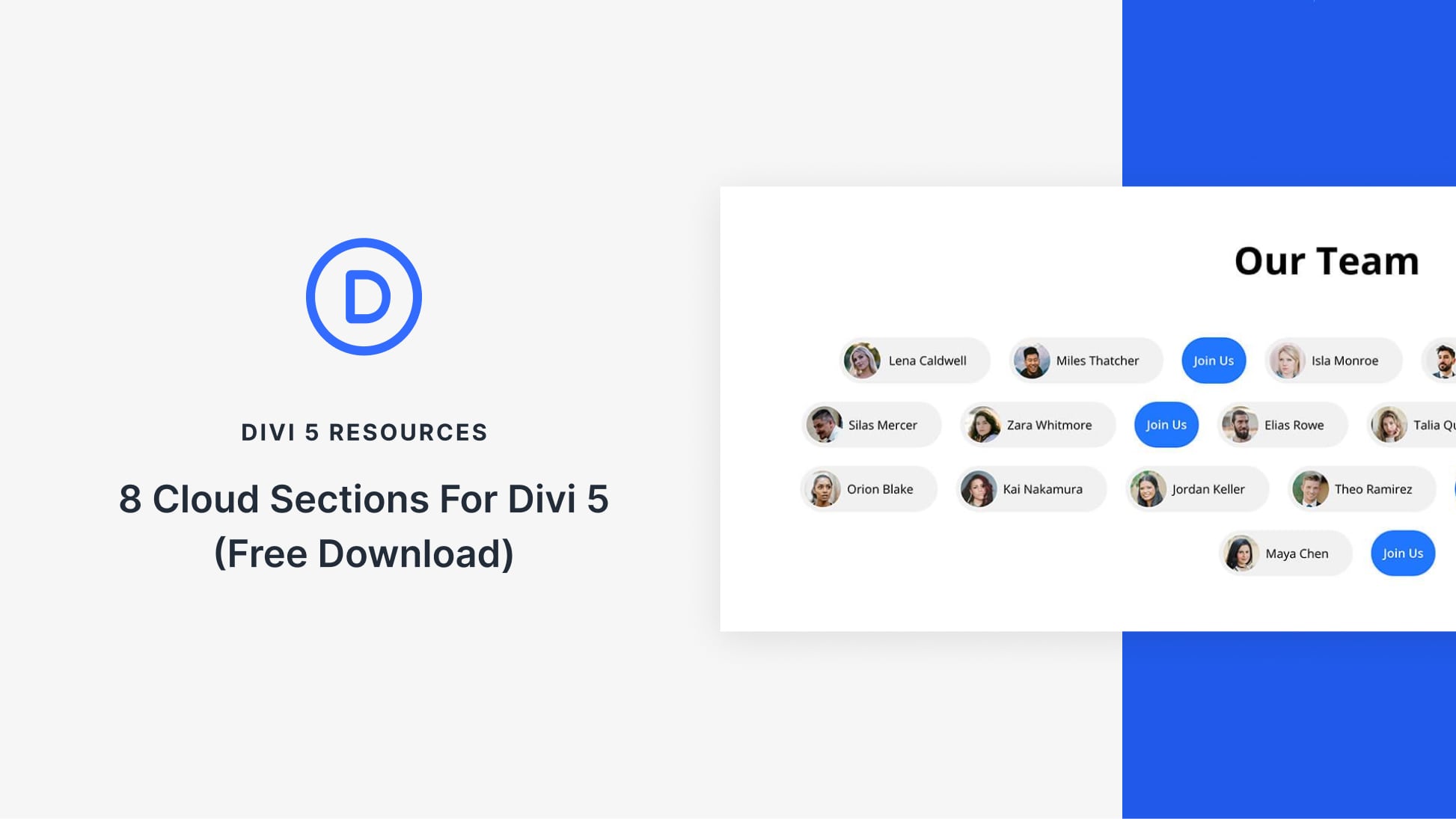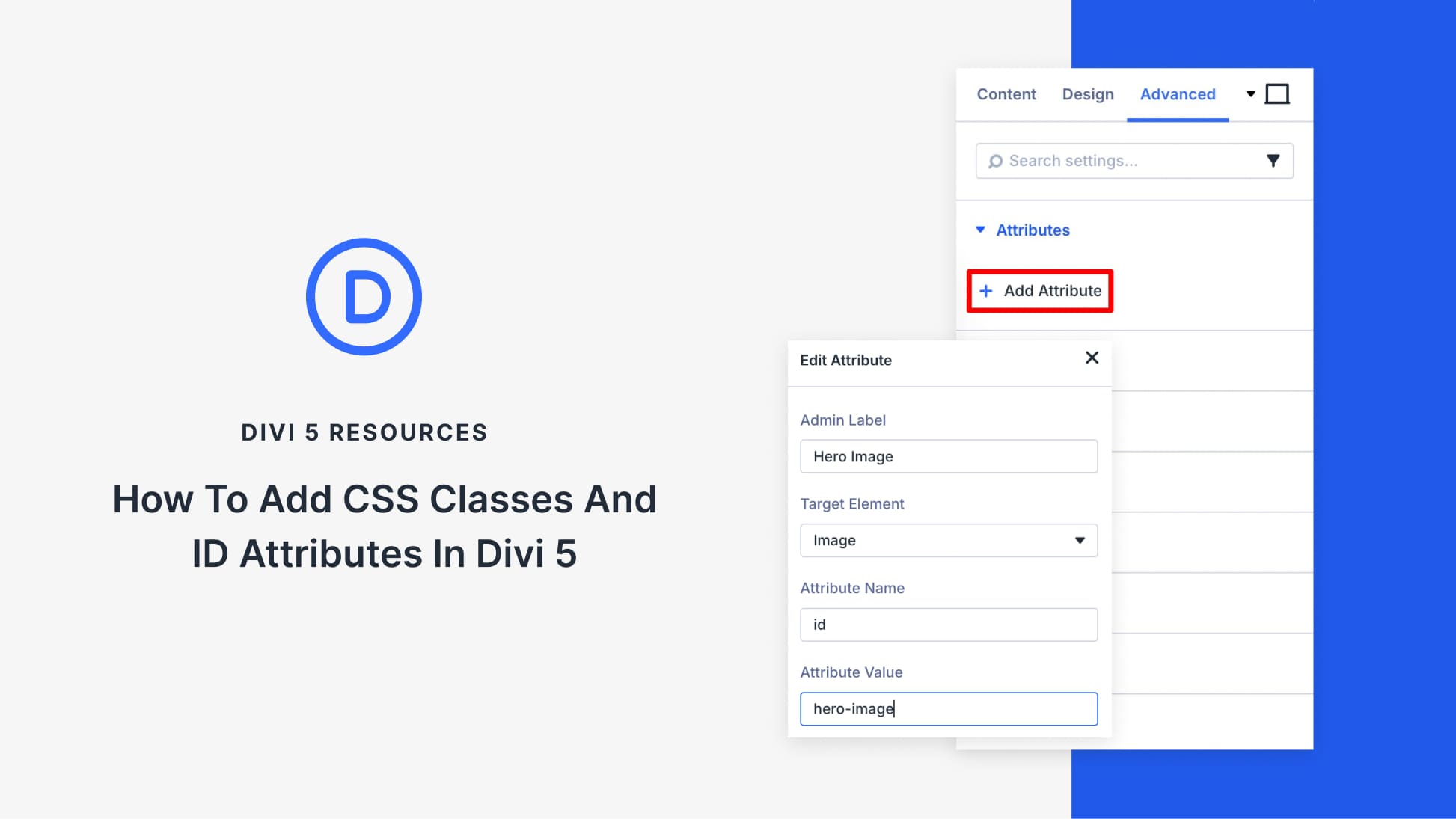Welcome to Part 4 of 4 of our mini series Divi Website Design Pricing where we’re exploring effective Divi website price ranges and providing some actionable ideas on how to price your web design services.
How and when you bring up your Divi web design pricing can be a make or break with certain clients. Some clients want to know a number right out of the gate. Others want to understand the value of your services and get to know you before choosing to begin a professional relationship with you. In this post, we’ll discuss some options you can apply to your business when it comes to how and when to talk about pricing with your clients!
How and When to Talk About Pricing with your Divi Web Design Clients
We all have a different mindset when it comes to how much you pay for a professional service. Particularly for web design, as we’ve explored in this series, it’s not easy to quickly answer the question “How much does a website cost.” An oil change for example, is pretty easy to estimate. Aside from the labor rate and type of oil chosen, there aren’t too many variables involved. With web design, it’s just a bit more complex. There are a few common mindsets when it comes to how to bring up pricing to your clients. In my talks with fellow web designers and folks in my Divi Web Designers Facebook Group, I often see questions to the effect of:
- Should I show my pricing on my site?
- Should I “sell” the client on me and my value before putting a number out?
- Should I waste time trying to sell my services to someone who won’t spend more than a certain amount?
- Should I let the client tell me their budget first?
These are such great questions and are a constant struggle for web designers. There’s no easy answer and what you choose may depend on your pricing model like we discussed in the previous post, but here are 3 options that may help you on how and when to bring up your pricing. Similar to yesterday’s post, these options all have pros and cons which we’ll explore to see what works best for you!
When to Bring Up Pricing
1) Pricing Up Front

Showing your pricing up front will likely be the case if you offer web design packages or a fixed hourly rate. If you feel strongly about your hourly rate and your worth of website package options, this is a very reasonable way to go. If you know your ideal clientele and don’t want to waste time with potential bad-fit clients at the “bottom of the barrel” persay, showing your pricing up front can be a good solution.
However, it can also prohibit you from being flexible and scaling with your projects to different levels. Case in point, a colleague of mine sold a website design for 15K to a local University that I would normally have charged around 5K for. If they had come to me willing to spend 15K but they saw a package for 5K, they could’ve got a great deal and I would’ve made a third of what they were wiling to pay. Or they could’ve seen that price range and thought that my services were low end and not as professional as they were willing to invest in.
Pros:
- Weed out the low balling clients looking for the cheapest deal
- Speed up the sales and proposal process
- Create a foundation of value depending on your pricing structure
Cons:
- Some clients may turn away before understanding the value of the investment
- No flexibility to raise or lower your prices depending on the client/situation if needed
- You can limit your potential for larger projects if you lock yourself into a lower price range
2) Client Chooses the Price

You’ll see this often with online quote generators and al la cart style, itemized pricing. So if a client wants to start at a $499 website package, but has the option to add contact forms, plugins and more pages, the quote generator will show them the price as they go. This can be tricky however as clients can feel nickel and dimed if they have to pay extra for every little add-on. A great example of how to use this method can be found at pageinaday.com which has a quote generator that clients can use to determine their pricing.
Pros:
- Great way to weed out cheap clients immediately
- Client can pick their pricing and determine what services they do and don’t want
- Saves a lot of time in the estimating/proposal process
Cons:
- Locks you into a certain price range with no flexibility to raise prices per project
- Competitors and rivals can undercut you by getting a quote and beating your prices
- Clients can feel nickel and dimed if every little add-on is an extra expense
3) Pricing on Proposal

This third method is what I employ and is the concept of waiting to show your price until you send an official proposal or estimate. This has some obvious pros and cons. On one hand, you get to know the client and they get to know you FIRST before price even enters the equation. This is a great way to get a potential client to spend 2 or 3 times as much as they had wanted to originally because they get to understand the value of your service and may get to know you and want to work with you regardless. One way to prepare clients who may be nervous about what the total investment will be is to give them a general price range in the initial call or meeting, then have the proposal land somewhere in the middle. For example, I might tell a client that projects around this size typically land in between the 2-4K range. Then I’ll quote them for 3K. So they often feel like they’re not getting quoted at the high end but aren’t a lower range project either.
But there are some obvious cons as well. As stated in yesterday’s post, custom pricing requires much more discover work in getting the know the client, their needs, the scope of the project, etc. And you’ll inevitable waste time periodically with people who just want the cheapest service. The goal for this method is to get your potential client to see the VALUE, not the number.
Pros:
- Relationship with potential client is formed and details and scope of project are figured out before deciding on a number
- Client gets to know you, understand the value and may be willing to spend more
- Flexibility to lower or raise your prices depending on the client/situation
- Easier to raise prices when clients don’t know what you’ve charged previously
Cons:
- Inevitable wasted time when preparing a quote and it not working out
- Much longer quoting/estimating process
- Harder to weed out bad leads and bad-fit clients
So now that we’ve covered 3 methods on “when” to bring up pricing, we must also address “how” to bring it up. I’d like to give you some quick tips on how to talk money with clients that have really helped me in my experience in working with such a variety of client across all industries and sizes of businesses.
Quick Tips on How to Bring Up Pricing
- How you talk about your pricing is everything – When I talk to potential clients, I refer to the price as an investment, not a “cost.” Telling a client “Most of my sites cost $2,000 dollars,” will not have as good of an effect than if you were to say “On average, most of my clients invest around $2,000 for this site project and that helps set them up with a strong foundation to build off of.” This is crucial in sales calls, in person meetings and through email. I try, at all costs, to avoid making the client feel like they’re “spending” money. Of course technically they are spending money but a website is an investment and an asset that is going to benefit their business and it’s our job as web designers to explain that to them.
- Weeding out cheap clients – I can often tell in the tone of an email or within about 5 minutes of a call whether the client is worth taking the next step with. If they are, I continue the conversation in detail and don’t mention price or general estimates. If I have a bad feeling, I may toss out general estimates and higher numbers to see how they respond. Generally, they say “Ok great, I’ll get back to you,” and I never hear from them again. Or they’ll be up front about what their budget is and I can go from there as to whether I’ll want to work with them.
- Comparing your pricing to others – Several years ago, I had given a quote to a prospective client for $1,500. They had been shopping around and asked if I had ever heard of someone only charging $500. In short, I said sure – but it’s all about the value they’d provide or in this case, lack there of. Thankfully, the client understood and is still a great client of mine today 🙂 But I’d say tread lightly with clients who shop around for the lowest rate. It’s totally understandable for someone to shop around for the best price that fits their needs, but some clients simply want the lowest possible price and you don’t want to win the race to the bottom as so well put in our previous pricing guide post. Work with clients if you need the sale but don’t devalue or undercut your worth!
- Explain the benefits of the investment – Clients are not going to understand what’s involved with a successful website design. They’re not going to understand or likely even think about browser compatibility, user experience, best practices for conversions, plugins and integrations or all of the meticulous care that goes into a good Divi website. I’ve found it very important to not overwhelm my client, but explain to them that a good website design so much more than some images and text. This is where your testimonials page can really come in handy 🙂 Show off your work, your clients stories and their success to help your potential clients not see a “cost,” but an investment in the growth of their business.
Series Wrap Up
Well I truly hope this series has either inspired or encouraged you to think about your pricing for your Divi Web Design services! We’ve covered a lot – from going over general price ranges for small to large Divi websites, to figuring out how much to charge for your services, to different pricing models and finally how and when to talk pricing with clients. I hope this has helped you out whether you’re just starting out or have been in the web design business for a while and want to rethink your pricing.
If you have any parting thoughts, if this series has helped you out or if you would like to comment on any of the ideas mentioned, please let us know in the comments below!
Be sure to subscribe to our email newsletter and YouTube channel so that you never miss a big announcement, useful tip, or Divi freebie!













I’ve started to see the LSEP invisible characters being printed on your blog (using Chrome) for a week or so… would be great to fix this. May be related to WP/Poppins font/Chrome.
Hi Dear Josh, Thanks for your awesome article, I am a starter and this sure helped me figuring out some big plans!
I think I’m gonna search for clients like “Name your price” for now, because I don’t have many clients yet, I got my website and such and getting just little freelancing jobs (not from my website). I need to work on my SEO or some other ways to find clients..
but later on I will change it to “Pricing on Proposal”
Sounds like a solid plan, Savalan! Thanks so much for your feedback! So glad to hear this article helped you out.
Great post Josh. I totally agree with Jerry.
Thanks, Mary. Yep Jerry had some great points up there!
Hi Josh Hall, Thanks for writing this amazing article. It solves lots of things. I have a question. how much should I charge per project? Thanks again.
Thanks, John! That question can’t be easily answered as it depends on all the variables involved. I.e. – your value, the scope of the project, etc. Honestly I’d recommending reading the whole series and that should help you out! It has pretty much all the answers I’d give you 🙂
awesome, good timing as I’m currently in this situation of having trouble pricing.
Thanks for this totally worth the time reading…
Awesome feedback, JF! I’m glad to hear that this post was worth the time! Thanks for sharing!
Another helpful article Josh! This is something I’m struggling with and I definitely need to look closely on how I approach my clients with pricing.
Awesome to hear, Rambo. Pricing is a struggle we all face so you’re not alone! Very glad this series helped you out!
Great series Josh! Thanks for the time in writing this all up!
Thanks for the encouragement and comment, Justin! Much appreciated man. Glad this series helped you out!
Josh, thank you. Deeply appreciate your insights in this thread of posts.
sue Hoffmeyer
sjzdesign.com
Really appreciate your feedback, Sue! Thanks for the encouragement and I’m glad these posts helped!
Thank you so much for this..
No problem, Gezilecek! Thanks for your comment and glad it helped!
Any tips for how to discuss what a potential client’s budget might be? Do you usually lead with your idea of what the investment will be, and they can tell you if that sounds within their budget or not?
That’s tricky for sure, Daniel. The only time I’ll throw out a general estimate is if someone asks about it or if I have a feeling they’re not a good fit and I don’t want to waste anymore time in the discovery phase. Just recently, I gave an estimate for a 6K website but the client was very transparent with me after sending it in saying that the max they could do within their marketing budget was 3K. He really wanted to work with me but that’s the most the company could do so we broke the site plan down into Phase 1, 2 and 3 and I worked within their budget. That situation has happened a few times but I’ve found more often than not, clients are fine with waiting to see cost until the proposal is sent.
I’ve found it very tricky business to ask about budget. That’s a last resort for me 🙂 Hope that helps!
I was in advertising sales for a long time before I got into web development so I have a lot of experience with this.
If left to my own plan, I’ll simply quote a price at the end of a conversation if it’s a simple project. Otherwise, I may want to provide a quote later. Quoting the price should feel natural, not a big finale.
If they ask me early in the conversation how much, I’ll tell them there are a lot of variables but give them a range of low to high. Just saying “it depends” is frustrating for a buyer. I know it is when I’m buying something where I have no earthly idea of the cost… er, investment.
In my experience, people who are overly price-sensitive counter-intuitively take a lot more time and are harder to please. I have no problem telling someone it’s not a fit if I am sure this is what’s going to happen. The reverse is also true. Client’s who pay top dollar are often so undemanding you can almost feel guilty for charging so much.
Very good feedback, Jerry! I can pretty much agree with everything you said there 🙂